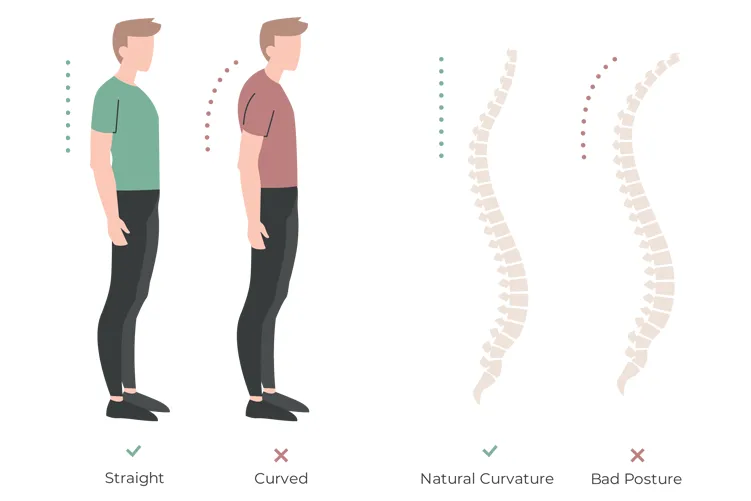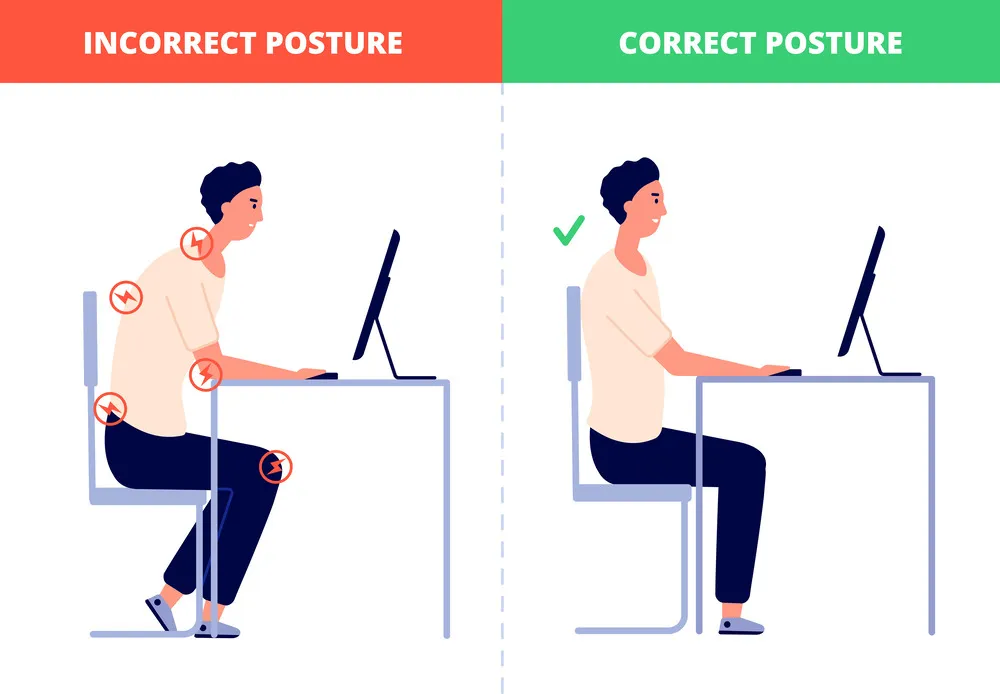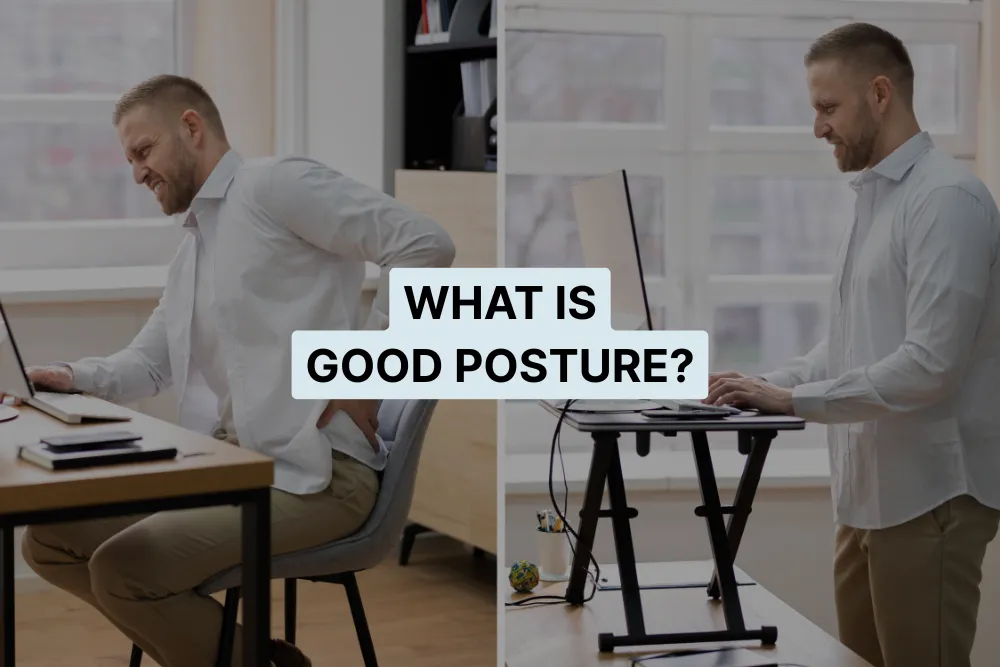Have you ever noticed how you sit, stand, or even walk during the day? That’s your posture and it quietly shapes how your body feels, moves, and functions.
Good posture isn’t just about looking confident. It helps your muscles, joints, and spine stay in balance, preventing pain and stiffness that often come from long hours of sitting or poor habits.
Let’s explore what posture really means, why it matters, and how you can maintain a healthy one every day.
Understanding Posture
Posture is the position your body holds while standing, sitting, or lying down. It’s how your bones and muscles work together to keep you upright and balanced.
A healthy posture means your body is aligned in a way that puts the least strain on your muscles and ligaments whether you’re moving or resting.
In simple terms, posture is how you carry yourself. It reflects your habits, strength, flexibility, and even mood. Think of it as your body’s “default setting.” Over time, that default can become good or bad depending on how you move and sit daily.
What Is Considered Bad Posture? Its Causes and Effects

Bad posture happens when your body is out of alignment, shoulders slouching, head leaning forward, or spine curving unnaturally.
It may seem harmless at first, but over time, poor posture can lead to back pain, neck tension, and reduced flexibility.
Common Signs and Effects of Poor Posture
- Frequent back or neck pain
- Rounded shoulders
- Muscle tightness or fatigue
- Headaches or stiffness after sitting long hours
- Feeling tired even after light activities
Everyday Habits That Lead to Bad Posture
- Sitting for long hours without breaks
- Using laptops or phones at awkward angles
- Sleeping on unsupportive mattresses or pillows
- Carrying heavy bags on one shoulder
- Lack of movement or stretching
Small daily habits add up and they can slowly change how your spine and muscles work.
What Is Good Posture?
Good posture is when your body is positioned in a way that places minimal stress on your muscles, ligaments, and joints. It’s about maintaining the natural curves of your spine while keeping your body balanced and aligned.
When you have good posture, your spine maintains its three natural curves: a gentle inward curve at the neck, an outward curve at the upper back, and another inward curve at the lower back.
Why Good Posture Is Important for Your Spine
Your spine supports everything you do. From walking, sitting, breathing and even sleeping. When posture is poor, extra stress falls on your spinal joints and muscles, leading to chronic discomfort and long-term issues like herniated discs or muscle imbalances.
Maintaining good posture throughout the day protects your spine and reduces unnecessary pressure on your back, whether you’re standing, sitting, or moving.
What is the Correct Sitting Posture?
Good sitting posture keeps your spine’s natural curves supported and your weight evenly distributed.

If you spend most of your day at a desk, here’s a step-by-step guide to ensure you maintain good posture:
- Change positions often
- Feet flat on the floor
- Knees at hip level
- Shoulders relaxed
- Back supported by the chair (Use a small cushion or lumbar roll for back support)
- Screen at eye level
- Avoid crossing your legs for long periods
Proper sitting posture means sitting in a way that maintains the natural “S” curve of your spine. It helps your muscles work efficiently and reduces strain on your back and neck.
Ergonomic chairs, standing desks, and lumbar cushions can make a big difference, especially for office workers.
How to Fix Your Posture Naturally
You don’t need special equipment to start improving your posture.
Simple exercises like:
- Shoulder rolls
- Chin tucks
- Cat-cow stretch
- Wall angels
- Bridge pose
These movements strengthen your core and back muscles, helping your body naturally align better.
When to Seek Professional Help
If you notice persistent pain, stiffness, or uneven shoulders, it may be time to see a physiotherapist. Also if you suspect a spinal condition such as scoliosis, kyphosis, or lordosis, consult a healthcare professional for proper assessment and treatment. They can assess your posture, identify muscle imbalances, and create a personalized plan to restore alignment.
Physiotherapy focuses on improving how your muscles and joints work together. Through manual therapy, guided exercises, and posture training, physiotherapists help you regain balance, reduce pain, and build long-term strength.
Final Thoughts on Maintaining Good Posture
- Stay aware of your body alignment.
- Move regularly throughout the day.
- Keep your workstation setup comfortable and ergonomic.
- Listen to your body. Pain is often a signal that something needs attention.
How Good Posture Improves Overall Health and Confidence
When your posture improves, so does your energy, confidence, and overall well-being. You move more freely, breathe better, and feel more comfortable in your body.
At Physioveda, our licensed physiotherapists in Dubai specialize in posture correction and spine alignment therapy. Through guided exercises, ergonomic advice, and personalized physiotherapy treatment plans, we help you restore balance, improve mobility, and build lasting body awareness

Amit Saraswat is the Founder of Physioveda Medical Center, a Dubai-based clinic focused on personalized physiotherapy and integrative healthcare. With a passion for patient-centric solutions, he leads the vision behind Physioveda’s evidence-based approach to pain relief and long-term recovery.

